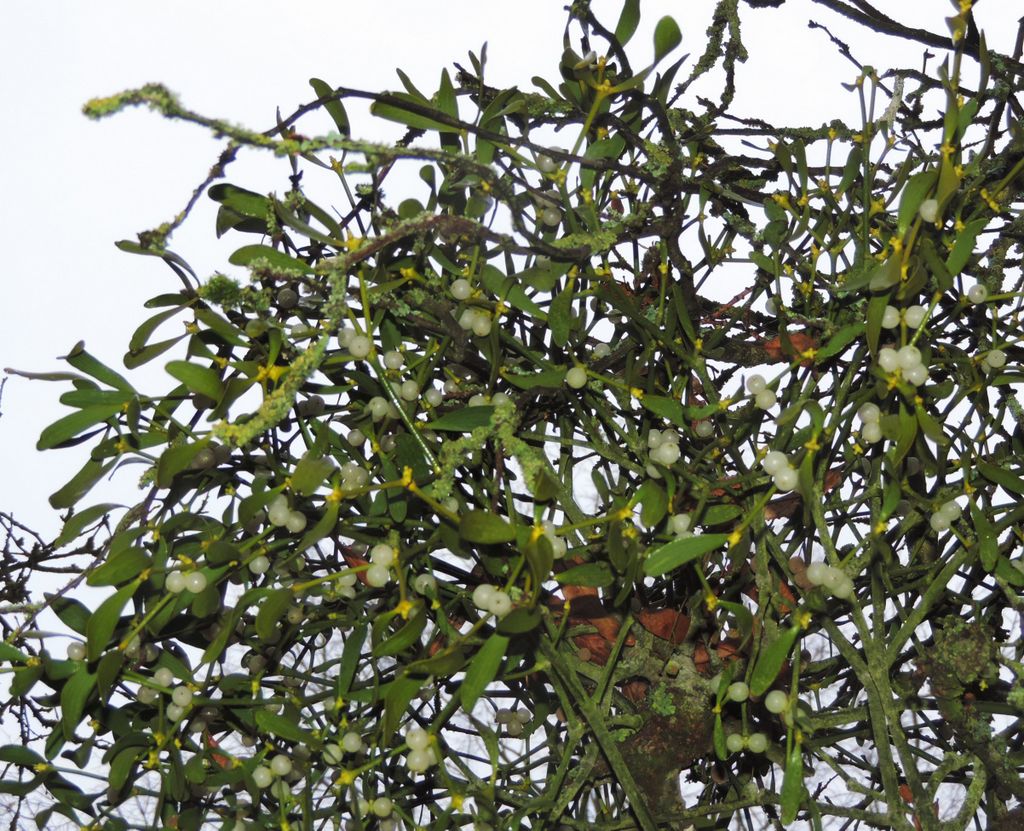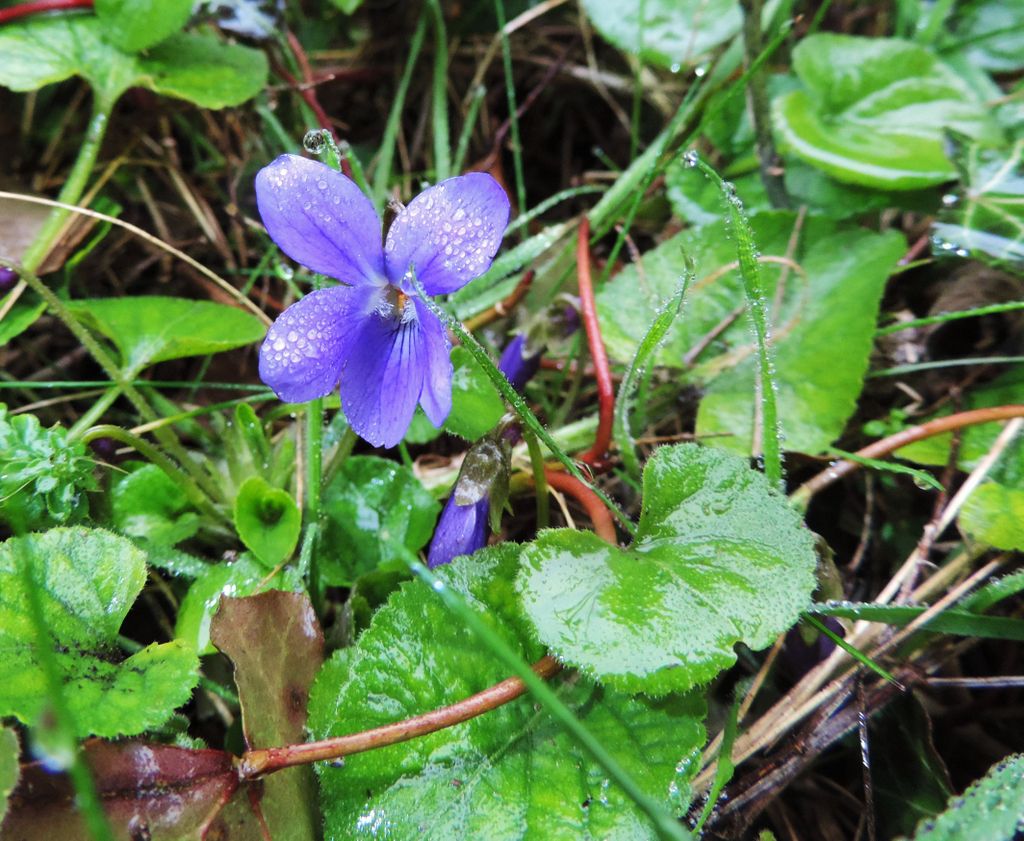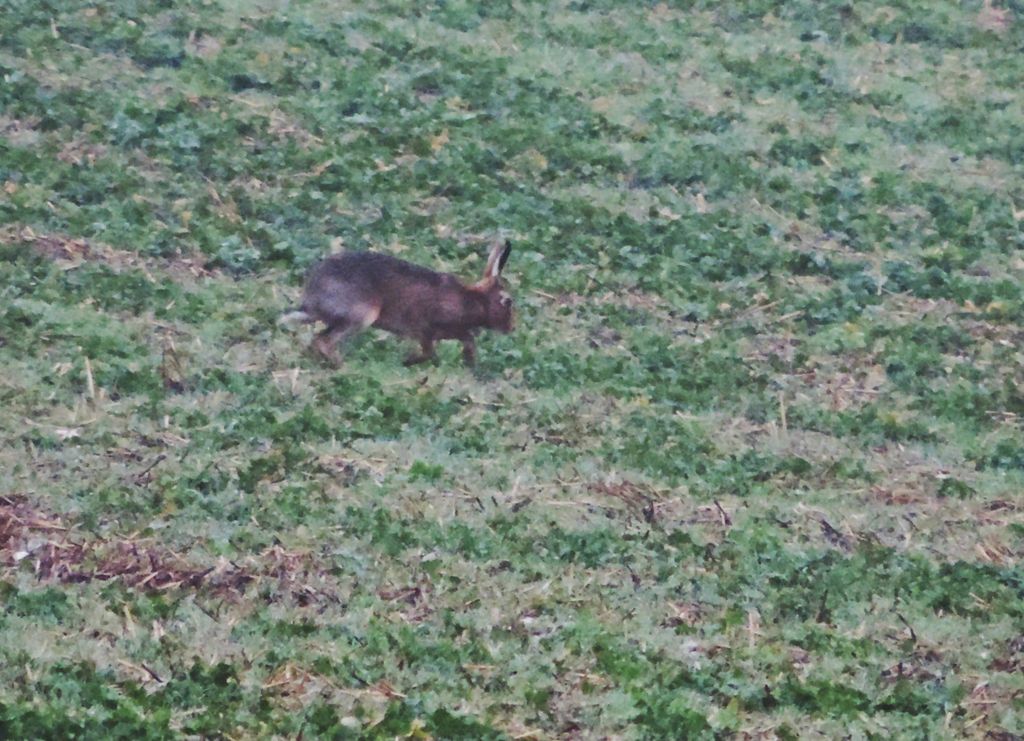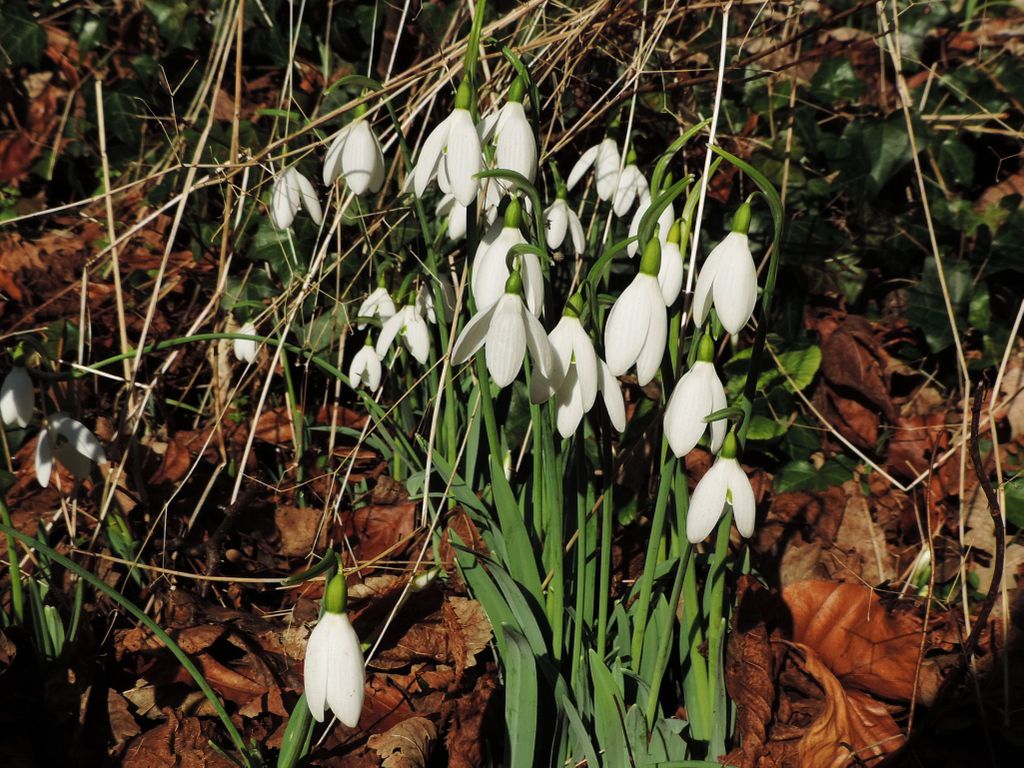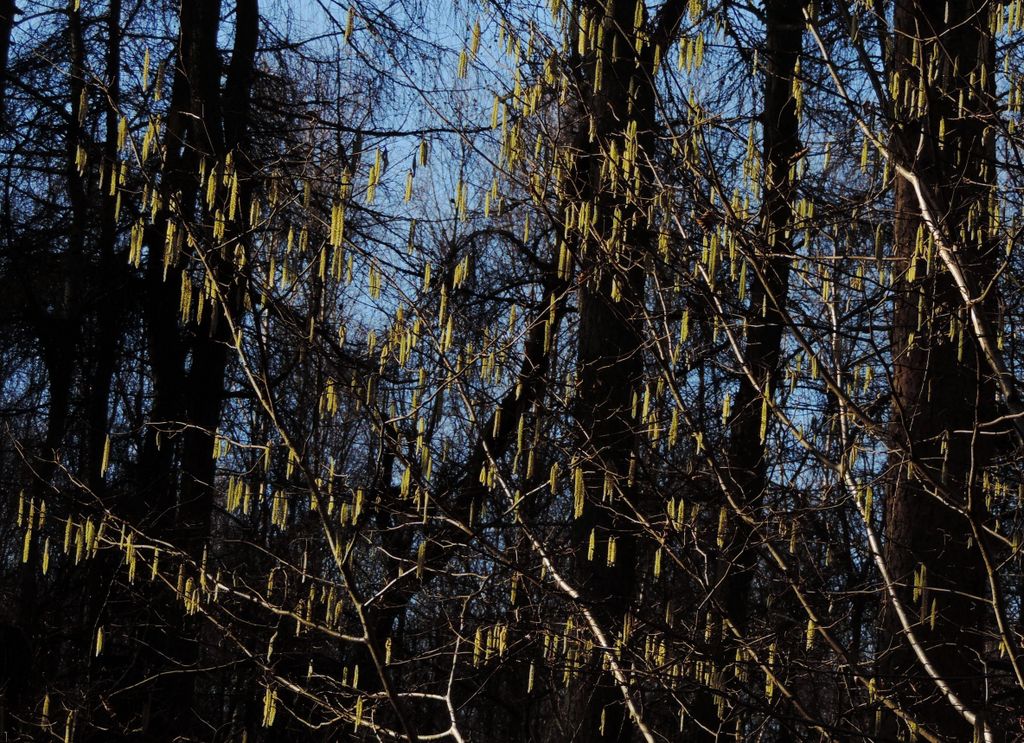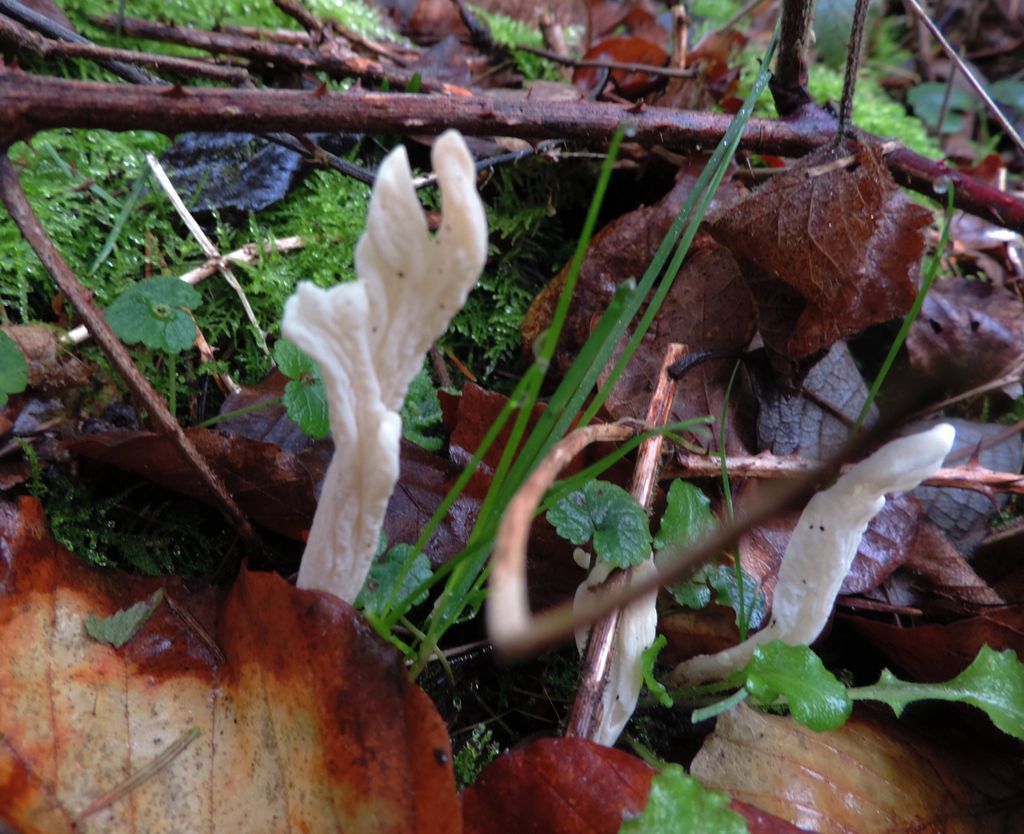The first midweek walk of the year was on Wednesday 22 January, when Rob Stallard led a circular walk, starting from the Rectory Gardens at Goring-on-Thames. Some of the Lime trees in the churchyard had big clumps of Mistletoe which were covered in white berries and a Song Thrush called from nearby. It was a still, damp and misty morning. The walk started out through the village, over the railway bridge, past the tennis courts and along a footpath which ran eastwards up a grassy slope. Sweet Violet and White Campion were found in flower at the base of the hedge beside the footpath. Also seen here were the orange berries of Stinking Iris and newly-formed leaves of the Wayfaring-tree. Redwings and at least one Fieldfare were feeding on berries at the top of the hedge and a Hare ran across the ploughed field to the right. Before the path entered Great Chalk Wood, Rob commented that, had it not been so misty, there would have been a fine view back across the valley of the Thames to the National Trust land at Streatley. New Bluebell leaves were poking up through the leaf litter in Great Chalk Wood, Dog’s Mercury was in flower and leaves of Brooklime were found in a puddle on the path. Several Jays flew up, calling loudly. The next path led through part of the wood where the Chalk bedrock was close to the surface. The leaves of Woodruff and Wood Spurge were seen here and there were a number of clumps of Butcher’s Broom with bright red berries and creamy white flowers. Several very big old multi-stemmed Field Maples were growing on the bank beside the path. There followed a short stretch of road, then the route turned onto a track towards Elvendon Priory. On the verge of Elvendon Lane was a fine display of Snowdrops. On the other side of the lane, another footpath led steeply up across a grassy field where leaves of Common Rock-rose and Salad Burnet indicated that it was fine Chalk grassland. The next path led along the top of the field and into Wroxhills Wood. Beside the path were many specimens of a creamy, sparsely-branched club-like fungus, tentatively identified as Wrinkled Club Clavulina rugosa. The catkins were fully out on the Hazels and a few of the red female flowers were also seen. There was a lot of Honeysuckle, the caterpillar food-plant of the White Admiral butterfly. One of the party reported that he had seen a White Admiral here the previous summer. It had been down on the ground on a muddy section of path. The final section of the walk followed footpaths down through woodland, across a grassy field and through a very muddy gateway, before emerging on a residential street in Cleeve. Stinking Hellebore was in flower on the west-facing bank above the railway line. The walk was followed by lunch at the Catherine Wheel pub in Goring.
Pictures by Rob Stallard

